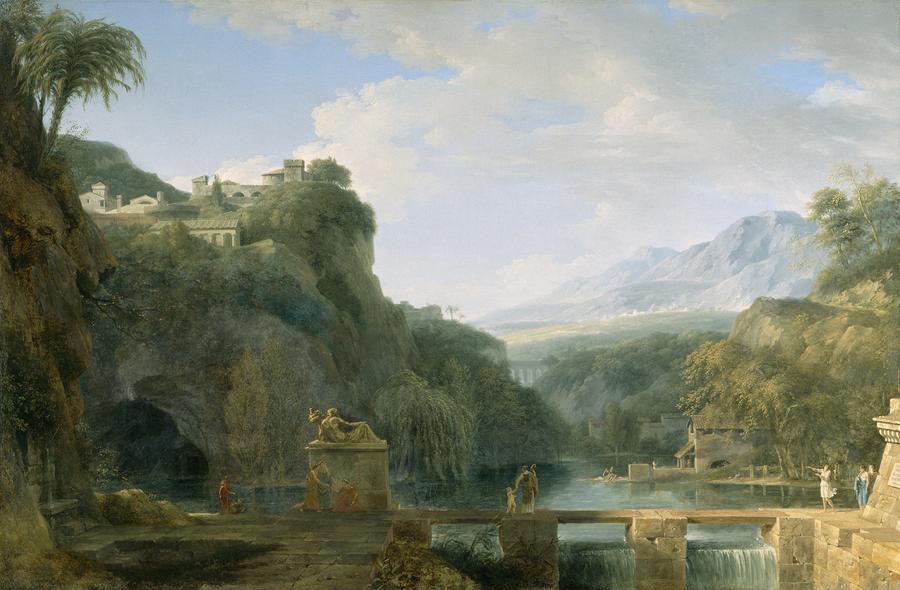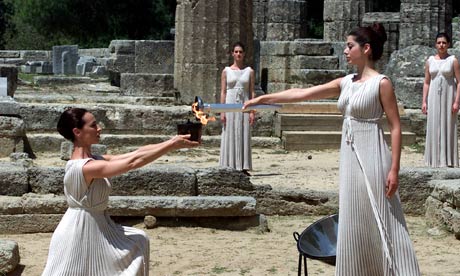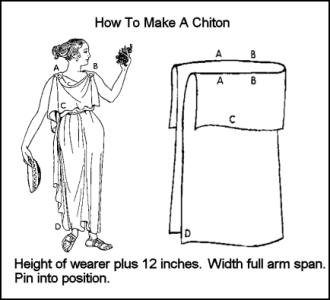WATCH: Alexander
VALUES:
Ancient Greek civilization has contributed to many parts of today's society. The teachings and doings of ancient Greeks have remained important lessons that many societies still base their own laws and ethics on. The ancient Greeks implemented their values of loyalty, glory, intelligence and hospitality into everyday life. While these values may seem simple, they effectively shaped an entire civilization into a culture that is one of the most referenced in history.
Read more : http://www.ehow.com/info_8447171_values-ancient-greeks-value-highly.html
Read more : http://www.ehow.com/info_8447171_values-ancient-greeks-value-highly.html
Ancient Greek civilization has contributed to many parts of today's society. The teachings and doings of ancient Greeks have remained important lessons that many societies still base their own laws and ethics on. The ancient Greeks implemented their values of loyalty, glory, intelligence and hospitality into everyday life. While these values may seem simple, they effectively shaped an entire civilization into a culture that is one of the most referenced in history.
Ancient Greek civilization has contributed to many parts of today's society. The teachings and doings of ancient Greeks have remained important lessons that many societies still base their own laws and ethics on. The ancient Greeks implemented their values of loyalty, glory, intelligence and hospitality into everyday life. While these values may seem simple, they effectively shaped an entire civilization into a culture that is one of the most referenced in history.
Read more : http://www.ehow.com/info_8447171_values-ancient-greeks-value-highly.html
Read more : http://www.ehow.com/info_8447171_values-ancient-greeks-value-highly.html
Ancient Greek civilization has contributed to many parts of today's society. The teachings and doings of ancient Greeks have remained important lessons that many societies still base their own laws and ethics on. The ancient Greeks implemented their values of loyalty, glory, intelligence and hospitality into everyday life. While these values may seem simple, they effectively shaped an entire civilization into a culture that is one of the most referenced in history.
Read more : http://www.ehow.com/info_8447171_values-ancient-greeks-value-highly.html
Read more : http://www.ehow.com/info_8447171_values-ancient-greeks-value-highly.html
Ancient Greek civilization has contributed to many parts of today's society. The teachings and doings of ancient Greeks have remained important lessons that many societies still base their own laws and ethics on. The ancient Greeks implemented their values of loyalty, glory, intelligence and hospitality into everyday life. While these values may seem simple, they effectively shaped an entire civilization into a culture that is one of the most referenced in history.
Read more : http://www.ehow.com/info_8447171_values-ancient-greeks-value-highly.html
Read more : http://www.ehow.com/info_8447171_values-ancient-greeks-value-highly.html
he ancient Greeks implemented their values of loyalty, glory, intelligence and hospitality into everyday life. While these values may seem simple, they effectively shaped an entire civilization into a culture that is one of the most referenced in history.
Read more : http://www.ehow.com/info_8447171_values-ancient-greeks-value-highly.html
Read more : http://www.ehow.com/info_8447171_values-ancient-greeks-value-highly.html
he ancient Greeks implemented their values of loyalty, glory, intelligence and hospitality into everyday life. While these values may seem simple, they effectively shaped an entire civilization into a culture that is one of the most referenced in history.
Read more : http://www.ehow.com/info_8447171_values-ancient-greeks-value-highly.html
Read more : http://www.ehow.com/info_8447171_values-ancient-greeks-value-highly.html
WOMEN:
Greek women had virtually no political rights of any kind and were controlled by men at nearly every stage of their lives. The most important duties for a city-dwelling woman were to bear children--preferably male--and to run the household. Duties of a rural woman included some of the agricultural work: the harvesting of olives and fruit was their responsibility, as may have been the gathering of vegetables.Since men spent most of their time away from their houses, Greek home life was dominated by women. The wife was in charge of raising the children, spinning, weaving and sewing the family´s clothes. She supervised the daily running of the household. In a totally slave-based economy, plentiful numbers of female slaves were available to cook, clean, and carry water from the fountain. Only in the poorest homes was the wife expected to carry out all these duties by herself. A male slave´s responsibilities were for the most part limited to being door-keeper and tutor to the male children.
Custom dictated that a Greek woman limit her time outside the house to visiting with her nearest female neighbors. Exceptions to this rigid social convention were weddings, funerals and state religious festivals in which women were expected to play prominent public roles.
RESOURCES:
Greek clothing was made out of three types of materials. The first mostly used was wool which was woven from very coarse to very soft. They used linen grades from fine to very soft. Drapery in Greek culture did not fold crisply like Egyptian folds fell and the linen was not as stiff as the linen used in Egypt.
Ancient Greek jewelry:
Ancient Greek Hair:
DATES: 3000 - 100 BCE |   | ||||||||||||||||||||||||||||
Men wore their hair long at the beginning of Greek culture but it soon became fashionable to have shorter hair with little facial hair. Older men would wear mustaches with a shortly-trimmed beard and if a man had a mustache and no beard they were not Greek. In the archaic period women wore their hair hanging in snaky curls held by a fillet but as time passed women would wear their hair up and confined in bag, kerchiefs or nets.
Colors of this period were bright-hued like yellow, indigo, green, violet, dark red, dark purple and colors that were from the earth. Motifs ranged from geometric like the dentil and arrangements of circles and squares to vegetable forms like the laurel, ivy and waterleaf.
Notable Greek Clothing Elements
 |



















.jpg)

No comments:
Post a Comment